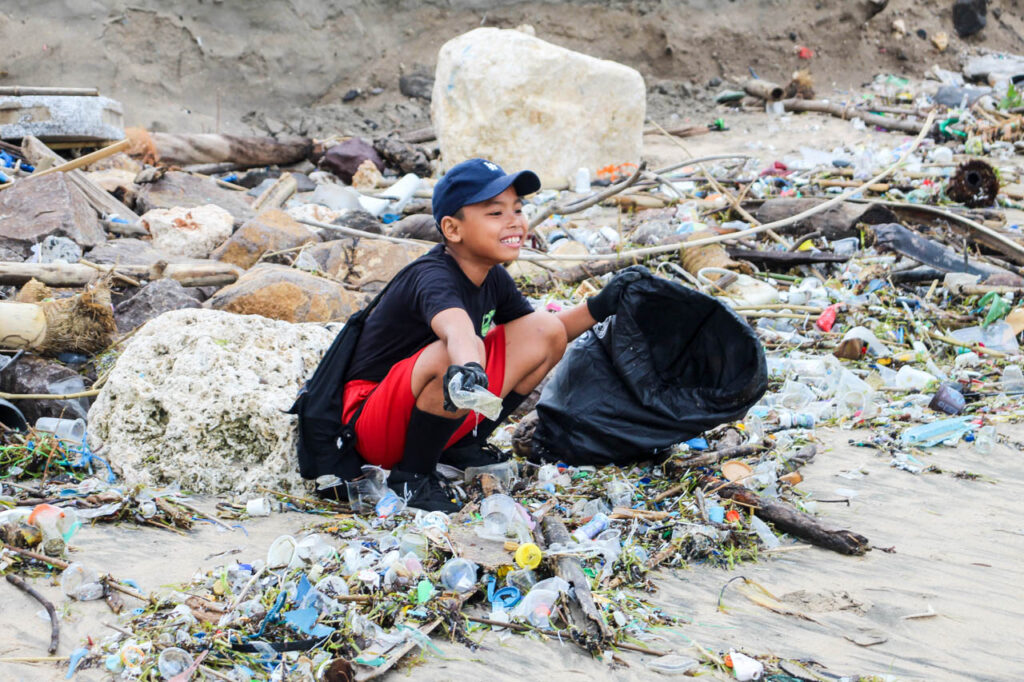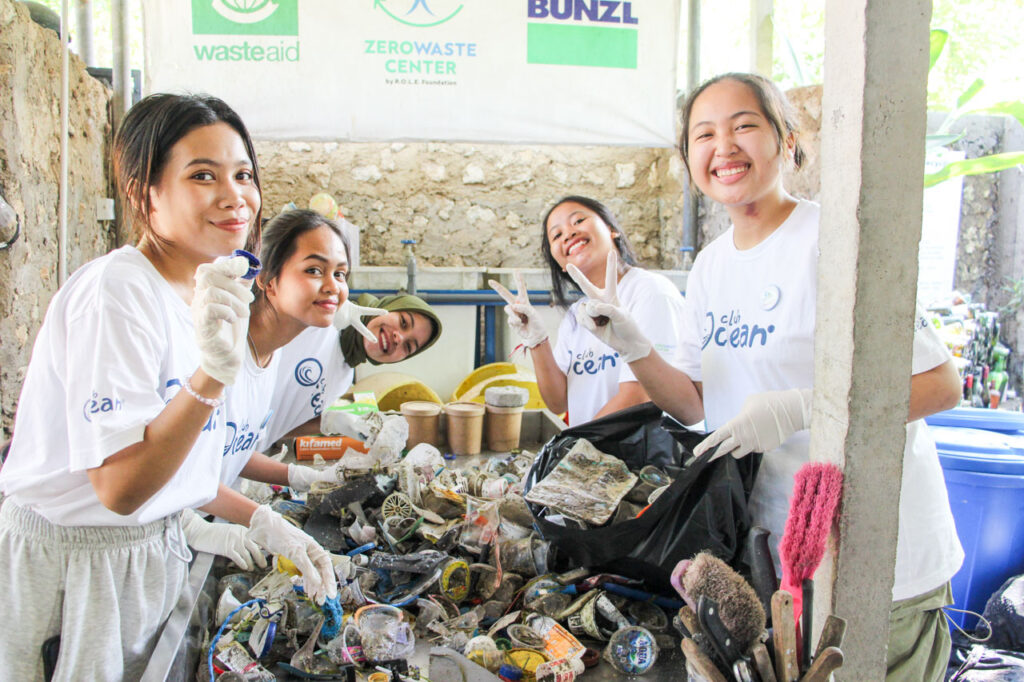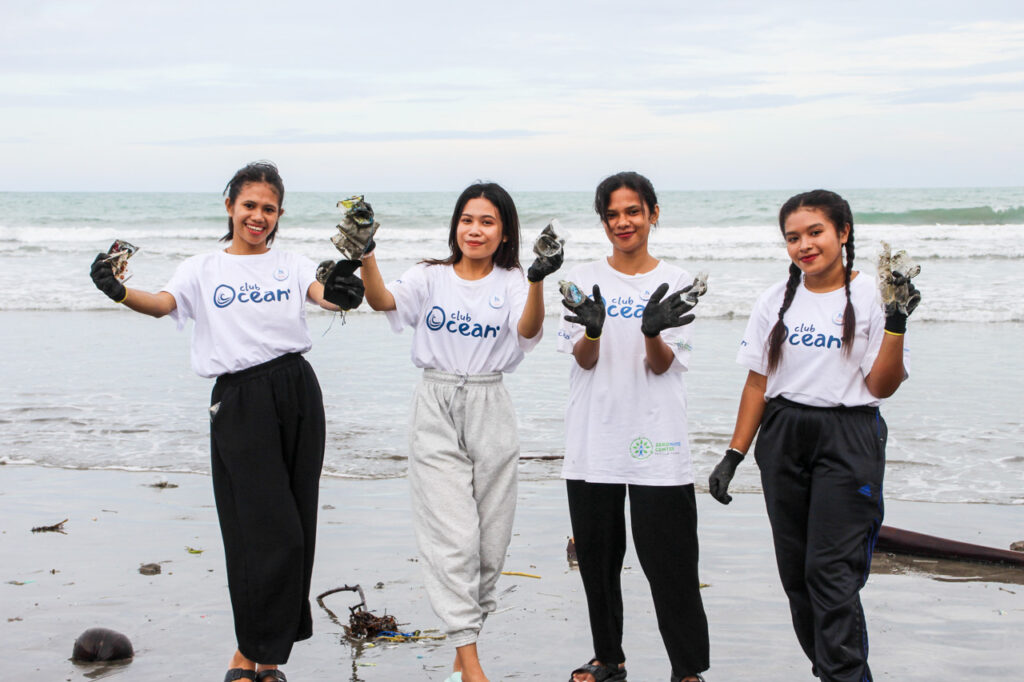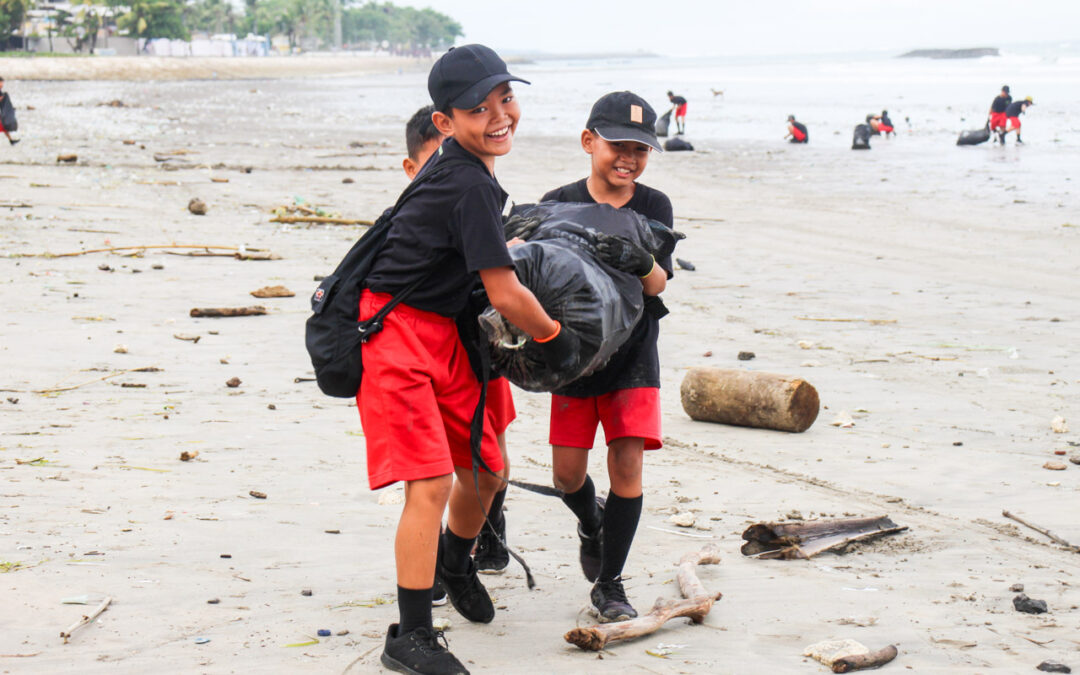On March 15th, we organized a Beach Cleanup at Kuta Beach. The previous day, an exceptionally high tide had washed a significant amount of waste onto the shores of Kuta Beach. Despite the challenges posed by the vast expanse of coastline and the limited number of participants, consisting of 57 dedicated individuals, we managed to make a substantial impact, collecting a total of 574.09 kg of inorganic waste. Among our participants were 20 students and 3 teachers from SD 12 Jimbaran, who enthusiastically contributed to the cause. Their efforts accounted for 29% of the total waste collected which is 163.7kg of waste, reflecting their commitment to environmental conservation and the preservation of coastal ecosystems. The Beach Cleanup lasted approximately one hour from 7 AM to 8 AM, during which time everyone worked tirelessly to rid the shoreline of debris. Despite the labor-intensive nature of the task, the atmosphere was vibrant and rewarding, as we witnessed the tangible difference we were making to the beach environment. While it’s true that we couldn’t eliminate all the waste, our collective efforts served as a powerful example to others. By demonstrating our dedication to environmental stewardship, we inspired those in the vicinity to join us in our mission to protect our coastlines and marine life.
Location and Condition of the Beach

Kuta Beach is renowned as the most famous beach in Bali, attracting a vast number of visitors each day. It’s bustling and beloved for its stunning white sand, excellent surfing spots, and lively atmosphere, drawing tourists from around the globe. However, amidst its popularity lies a significant issue—daily accumulation of waste, including debris washed ashore from the ocean. Sadly, many visitors have expressed disappointment at the sight of litter strewn across the shore, tarnishing Kuta’s natural beauty. During our survey for a suitable beach cleanup location, we observed a concerning sight: a lengthy stretch of waste along the shoreline near the Pasar Seni Kuta Area. The previous day’s high tide only exacerbated the problem, depositing even more debris onto the beach. It was evident that Kuta Beach was in dire need of attention. Thus, we decided to focus our March Beach Cleanup efforts here. With its prominent status and the large number of people in the vicinity, we aimed to set a positive example by taking action to address the issue of coastal pollution. By rallying together and diligently collecting trash, we hoped to inspire others to join in the effort to keep Kuta Beach and its surroundings clean and beautiful for generations to come.
Waste Collection and Separation

During this beach cleanup, we successfully gathered 574.09 kg of inorganic waste from Kuta Beach. The majority of the waste collected, amounting to 72.21%, was categorized as residue. This was primarily because much of the waste found on the beach was already torn, broken, or too soiled to be classified into specific plastic types. The second most common type of waste collected was hard plastic, which is a rarity. Among the hard plastic items, clear plastic cups were the most prevalent. This could be attributed to Kuta Beach being heavily visited, leading to a high consumption of beverages served in plastic cups by vendors along the shore. Interestingly, we also collected a significant number of sandals/slipper, constituting 8.2% of the total waste collected. This is not typically encountered during beach cleanups, highlighting a unique aspect of this cleanup effort. However, we observed a lower presence of laminated plastic and other soft plastics compared to previous cleanups. This was likely due to a considerable amount of broken and fragmented soft plastics, making them harder to identify and collect.



Recent Comments